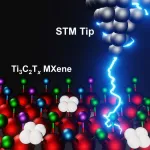(Press-News.org) The ongoing opioid epidemic in the U.S. kills tens of thousands of people every year. Naloxone, sold under the brand name Narcan, has saved countless lives by reversing opioid overdoses. But new and more powerful opioids keep appearing, and first responders are finding it increasingly difficult to revive people who overdose.
Now, researchers have found an approach that could extend naloxone’s lifesaving power, even in the face of ever-more-dangerous opioids. A team of researchers from Washington University School of Medicine in St. Louis, Stanford University and the University of Florida have identified potential drugs that make naloxone more potent and longer lasting, capable of reversing the effects of opioids in mice at low doses without worsening withdrawal symptoms. The study is published July 3 in Nature.
“Naloxone is a lifesaver, but it’s not a miracle drug; it has limitations,” said co-senior author Susruta Majumdar, PhD, a professor of anesthesiology at Washington University. “Many people who overdose on opioids need more than one dose of naloxone before they are out of danger. This study is a proof of concept that we can make naloxone work better — last longer and be more potent — by giving it in combination with a molecule that influences the responses of the opioid receptor.”
Opioids such as oxycodone and fentanyl work by slipping inside a pocket on the opioid receptor, which is found primarily on neurons in the brain. The presence of opioids activates the receptor, setting off a cascade of molecular events that temporarily alters how the brain functions: reducing the perception of pain, inducing a sense of euphoria and slowing down breathing. It is this suppression of breathing that makes opioids so deadly.
The molecular compound described in the paper is a so-called negative allosteric modulator (NAM) of the opioid receptor. Allosteric modulators are a hot area of research in pharmacology, because they offer a way to influence how the body responds to drugs by fine-tuning the activity of drug receptors rather than the drugs themselves. Co-author Vipin Rangari, PhD, a postdoctoral fellow in the Majumdar lab, did the experiments to chemically characterize the compound.
Naloxone is an opioid, but unlike other opioids, its presence in the binding pocket doesn’t activate the receptor. This unique feature gives naloxone the power to reverse overdoses by displacing problematic opioids from the pocket, thereby deactivating the opioid receptor. The problem is that naloxone wears off before other opioids do. For example, naloxone works for about two hours, while fentanyl can stay in the bloodstream for eight hours. Once naloxone falls out of the binding pocket, any fentanyl molecules that are still circulating can re-attach to and re-activate the receptor, causing the overdose symptoms to return.
The research team — led by co-senior authors Majumdar; Brian K. Kobilka, PhD, a professor of molecular and cellular physiology at Stanford University; and Jay P. McLaughlin, PhD, a professor of pharmacodynamics at the University of Florida — set out to find NAMs that strengthen naloxone by helping it stay in the binding pocket longer and suppress the activation of the opioid receptor more effectively.
To do so, they screened a library of 4.5 billion molecules in the lab in search of molecules that bound to the opioid receptor with naloxone already tucked into the receptor’s pocket. Compounds representing several molecular families passed the initial screen, with one of the most promising dubbed compound 368. Further experiments in cells revealed that, in the presence of compound 368, naloxone was 7.6 times more effective at inhibiting the activation of the opioid receptor, partly because naloxone stayed in the binding pocket at least 10 times longer.
“The compound itself doesn’t bind well without naloxone,” said Evan O’Brien, PhD, the lead author on the study and a postdoctoral scholar in Kobilka’s lab at Stanford. “We think naloxone has to bind first, and then compound 368 is able to come in and cap it in place.”
Even better, compound 368 improved naloxone’s ability to counteract opioid overdoses in mice and enabled naloxone to reverse the effects of fentanyl and morphine at 1/10th the usual doses.
However, people who overdose on opioids and are revived with naloxone can experience withdrawal symptoms such as pain, chills, vomiting and irritability. In this study, while the addition of compound 368 boosted naloxone’s potency, it did not worsen the mice’s withdrawal symptoms.
“We have a long way to go, but these results are really exciting,” McLaughlin said. “Opioid withdrawal likely won’t kill you, but they’re so severe that users often resume taking opioids within a day or two to stop the symptoms. The idea that we can rescue patients from overdose with reduced withdrawal might just help a lot of people.”
Compound 368 is just one of several molecules that show potential as NAMs of the opioid receptor. The researchers have filed a patent on the NAMs, and are working on narrowing down and characterizing the most promising candidates. Majumdar estimates that it will be 10 to 15 years before a naloxone-enhancing NAM is brought to market.
“Developing a new drug is a very long process, and in the meantime new synthetic opioids are just going to keep on coming and getting more and more potent, which means more and more deadly,” Majumdar said. “Our hope is that by developing a NAM, we can preserve naloxone’s power to serve as an antidote, no matter what kind of opioids emerge in the future.”
END
Experimental drug supercharges medicine that reverses opioid overdose
Adding newly ID’d compound makes naloxone more potent, longer lasting, mouse study shows
2024-07-03
ELSE PRESS RELEASES FROM THIS DATE:
Risk of nonarteritic anterior ischemic optic neuropathy in patients prescribed semaglutide
2024-07-03
About The Study: The findings of this study suggest an association between semaglutide, a glucagon-like peptide 1 receptor agonist, and nonarteritic anterior ischemic optic neuropathy. As this was an observational study, future study is required to assess causality.
Corresponding Author: To contact the corresponding author, Joseph F. Rizzo III, M.D., email joseph_rizzo@meei.harvard.edu.
To access the embargoed study: Visit our For The Media website at this link https://media.jamanetwork.com/
(doi:10.1001/jamaophthalmol.2024.2296)
Editor’s Note: Please see the article for additional information, ...
Environmental toxicant exposure and depressive symptoms
2024-07-03
About The Study: The results of this study suggest that many common environmental toxicants are associated with depressive symptoms. This research provides insight into selecting environmental targets for mechanistic research into the causes of depression and facilitating efforts to reduce environmental exposures.
Corresponding Author: To contact the corresponding author, Jing Li, Ph.D., email jing.li@hsc.pku.edu.cn.
To access the embargoed study: Visit our For The Media website at this link https://media.jamanetwork.com/
(doi:10.1001/jamanetworkopen.2024.20259)
Editor’s ...
Web-based cognitive behavioral treatment for bulimia nervosa
2024-07-03
About The Study: In this randomized clinical trial, a web-based cognitive behavioral self-help intervention effectively decreased eating disorder symptoms and illness-related burden in individuals with bulimia nervosa, underlining the potential of digital interventions to complement established treatments.
Corresponding Author: To contact the corresponding author, Steffen Hartmann, M.S., email steffen.hartmann@psychologie.uni-heidelberg.de.
To access the embargoed study: Visit our For The Media website at this link https://media.jamanetwork.com/
(doi:10.1001/jamanetworkopen.2024.19019)
Editor’s ...
States with highest COVID-19 vaccination rates showed steepest decline in pediatric asthma prevalence
2024-07-03
States with Highest COVID-19 Vaccination Rates Showed Steepest Decline in Pediatric Asthma Prevalence
Study suggests COVID-19 vaccination might have broader benefits for children living with asthma
WILMINGTON, Del. (July 3, 2024) — States with high rates of COVID-19 vaccination saw more pediatric asthma patients get a break from their symptoms, according to new research published today in JAMA Network Open by leaders from Nemours Children’s Health and Endeavor Health.
“Asthma is one of the most common chronic illnesses among children in the United States, with about 4.7 million ...
Scientists unravel life-saving effect of dexamethasone in COVID-19
2024-07-03
Dexamethasone is one of the most important drugs in the treatment of severe COVID-19, but patients respond very differently to the therapy. Researchers at the German Center for Neurodegenerative Diseases (DZNE) and Charité – Universitätsmedizin Berlin have now discovered how the cortisone compound influences the impaired inflammatory response and which patients benefit from it. Their method uses so-called single-cell analyses and raises hopes for a precise prediction tool for other therapies and diseases as well. The findings have been published in the scientific journal Cell.
It has long been puzzling why certain drugs work so well for some people and fail ...
Mapping the surfaces of MXenes, atom by atom, reveals new potential for the 2D materials
2024-07-03
In the decade since their discovery at Drexel University, the family of two-dimensional materials called MXenes has shown a great deal of promise for applications ranging from water desalination and energy storage to electromagnetic shielding and telecommunications, among others. While researchers have long speculated about the genesis of their versatility, a recent study led by Drexel and the University of California, Los Angeles, has provided the first clear look at the surface chemical structure foundational to MXenes’ capabilities.
Using advanced imaging techniques, known as ...
Mobile phone data helps track pathogen spread and evolution of superbugs
2024-07-03
A new way to map the spread and evolution of pathogens, and their responses to vaccines and antibiotics, will provide key insights to help predict and prevent future outbreaks. The approach combines a pathogen’s genomic data with human travel patterns, taken from anonymised mobile phone data.
Researchers from the Wellcome Sanger Institute, University of the Witwatersrand and National Institute for Communicable Diseases in South Africa, the University of Cambridge, and partners across the Global Pneumococcal Sequencing project1, integrated genomic data from nearly 7,000 Streptococcus pneumoniae (pneumococcus) samples collected in South Africa with detailed ...
Discovery of cellular mechanism to maintain brain’s energy could benefit late-life brain health
2024-07-03
A key mechanism which detects when the brain needs an additional energy boost to support its activity has been identified in a study in mice and cells led by UCL scientists.
The scientists say their findings, published in Nature, could inform new therapies to maintain brain health and longevity, as other studies have found that brain energy metabolism can become impaired late in life and contribute to cognitive decline and the development of neurodegenerative disease.
Lead author Professor Alexander Gourine (UCL Neuroscience, ...
Extinct humans survived on the Tibetan plateau for 160,000 years
2024-07-03
Bone remains found in a Tibetan cave 3,280 m above sea level indicate an ancient group of humans survived here for many millennia, according to a new study published in Nature.
The Denisovans are an extinct species of ancient human that lived at the same time and in the same places as Neanderthals and Homo sapiens. Only a handful Denisovan remains have ever been discovered by archaeologists. Little is known about the group, including when they became extinct, but evidence exists to ...
PolyU study reveals the mechanism of bio-inspired control of liquid flow, enlightening breakthroughs in fluid dynamics and nature-inspired materials technologies
2024-07-03
The more we discover about the natural world, the more we find that nature is the greatest engineer. Past research believed that liquids can only be transported in fixed direction on species with specific liquid communication properties and cannot switch the transport direction. Recently, The Hong Kong Polytechnic University (PolyU) researchers have shown that an African plant controls water movement in a previously unknown way – and this could inspire breakthroughs in a range of technologies in fluid dynamics and nature-inspired materials, including applications that require multistep and repeated reactions, such as microassays, medical ...
LAST 30 PRESS RELEASES:
Your pet's flea treatment could be destroying the planet
Diabetes risk not associated with timing or type of menopause
Bulk inorganic crystals grown from water emit “handed” light
A new AI-based attack framework advances multi-agent reinforcement learning by amplifying vulnerability and bypassing defenses
While exploring the cosmos, astronauts also fuel explorations of the biology of aging and cellular resilience
Design and synthesis of Zr-IR825 nanoparticles for photothermal therapy of tumor cells
Food critics or food grabbers? When choosing food, wood mice split into careful examiners who sniff and handle, and quick nut grabbers
‘Cosmic clock’ reveals Australian landscapes’ history and potential future
Higher maternal blood pressure increases the risk of pregnancy complications, study concludes
Postoperative complications of medical tourism may cost NHS up to £20,000/patient
Phone apps nearly 3 times as good as no/basic support for quitting smoking long term
Female sex and higher education linked to escalating prevalence of obesity and overweight in Africa
THE LANCET + eCLINICALMEDICINE: Two studies on reductions in mortality from small changes lifestyle changes
AI model identifies how every country can improve its cancer outcomes
Young people risk drifting into serious online offenses through a slippery slope of high-risk digital behavior
Implant provides lasting relief for treatment-resistant depression
Autologous T cell therapy targeting multiple antigens shows promise treating pancreatic cancer
First extensive study into marsupial gut microbiomes reveals new microbial species and antimicrobial resistance
Study debunks myth of native Hawaiians causing bird extinctions
Tailored biochar could transform how crops grow, resist disease, and clean polluted soils
Biochar-based enzyme technology offers new path for cleaner water and soil
Biochar helps farmland soils withstand extreme rain and drought by steadying carbon loss
New study reveals major gaps in global forest maps
Ochsner Health names Dr. Timothy Riddell executive vice president and chief operating officer
Can future-focused thoughts help smokers quit?
From brain scans to alloys: Teaching AI to make sense of complex research data
Stem Cell Reports seeks early career editors to join the editorial board
Signs of ancient life turn up in an unexpected place
Pennington Biomedical researchers explore factors behind body’s ability to regulate weight
Zhongping Lee awarded the Nils Gunnar Jerlov Medal
[Press-News.org] Experimental drug supercharges medicine that reverses opioid overdoseAdding newly ID’d compound makes naloxone more potent, longer lasting, mouse study shows


